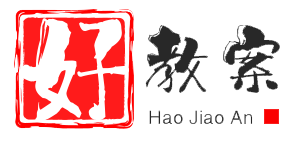- 40.50 KB
- 2023-12-01 15:50:06 发布
1、本文档内容版权归属内容提供方,所产生的收益全部归内容提供方所有。如果您对本文有版权争议,可选择认领,认领后既往收益都归您。
2、本文档由用户上传,本站不保证质量和数量令人满意,可能有诸多瑕疵,付费之前,请仔细先通过免费阅读内容等途径辨别内容交易风险。如存在严重挂羊头卖狗肉之情形,可联系本站下载客服投诉处理。
新目标九年级英语(下)复习资料
◆ unit11 Could you please tell me where the restrooms are?
目标语言:ask for information politely
重点句型:P86-1a&1c,P87-2a&2c,p88-3b&4
要求背诵的是p88-3a
知识点:
1. 宾语从句的定义:宾语从句就是在复合句中作主句的宾语。
2. 宾语从句的引导词:1)连词that引导的宾语从句,在口语和非正式文件中可以省略。2)由连接代词what, which, who, whose或连接副词when, where, why, how等词引导的宾语从句。3)由连词if或whether引导。如,I hope that you will have a good holiday. He asked who could answer this question. They don’t know if they will visit the history museum tomorrow.
3. 宾语从句的语序:宾语从句的语序应当用陈述语序。即,从句的连接词后面是主语+谓语+宾语的语序。注意连接词在句子中当主语时,后面直接跟谓语和宾语。如He asked who could answer these questions. Could you tell us what time the plane leaves?
4. Perhaps, maybe, probably: perhaps表示“可能,也许”,之意但不能肯定,它修饰整个句子。Maybe为副词,表示“或许,大概”之意,一般用于句子的开头,常用于口语。Probably有可能性较大的意味,可以位于句首,也可以位于谓语动词前,情态动词,助动词或be动词的后面。
5. both, either, neither: both表示“两者都”;either表示“两者中的任何一个”;neither表示“两者中任何一个都不”。1)作形容词时,neither,either修饰名词的单数形式,both则修饰名词的复数形式。2)作代词时,neither,either通常被视为单数,both用作复数。作代词时,both还可以作同位语,neither, either则不可以。3)neither…nor意思为“既不…也不…”;either…or意思为“或是….或是…”;both…and…意思为“双方都….;既….又…”三者均为并列连词。即连接两个相同的句子成分。当neither…nor, either…or连接句子的两个主语时,其后谓语动词通常和最邻近的主语在人称及数上保持一致。Both…and….连接句子的两个主语时,其后的谓语动词通常使用复数形式。
6. dress, have on, put on, wear: dress作及物动词用时,指“给某人穿衣服”,dress既可以表示动作,也可以表示状态。Dress表示替别人穿衣服时,接表示人的名词或代词作宾语。如,The mother dressed her son quickly and took him to the kindergarten. Dress表示自己穿衣服这个动作时,接反身代词作宾语,或者用作不及物动词。如,Lily is old enough to dress herself. Dress作不及物动词用,意思是“穿衣,穿礼服”。
◆ unit 12 You’re supposed to shake hands.
目标语言:Tell what you are supposed to do
重点句型:P95-2b&2c, P97-1&2b
要求背诵的是P98-3a
知识点:
1. be supposed to do sth.:be supposed是suppose一词的被动语态结构。后接动词不定式时,含义相当于should后接不定式。但should后面的不定式要省略不定式符号to,且属于主动语态形式,使用起来较严肃和正式;而be supposed to do sth的使用教随便,建议性强。否定式为be not supposed to do sth.,另外ought to do sth也是其一个同义表达的形式,但要注意表示过去时,ought后接完成式的不定式,使用时需要灵活掌握和运用。如You are not supposed to shake hands.= You shouldn’t shake hands.= You ought not (oughtn’t) to shake hands.你不应与之握手。
2. Unfamiliar的用法:为形容词,意思为“不熟悉的;没有见过或听过的”,其同义为strange,其反义词为familiar.1) be unfamiliar to…表示“不深知的;生疏的”如,That face is unfamiliar to me.那副面孔我很生疏。2)be unfamiliar with…表示“没听过,没听见,不熟悉的”如,I am unfamiliar with their music.我没听过他们的音乐。
3. used to do sth, be used to do sth, be/get used to sth./ doing sth.: 1) used to do sth意思是“过去常常做某事;过去曾经做某事”,表示过去发生的动作,其中的to do sth为不定式结构。如,I used to take piano lessons.我过去上钢琴课。2)be used to do sth意思为“被用来做某事”,其中的to do sth是不定式结构。如,Paper is used to make kites.纸用来做风筝。3)be/get used to 表示“习惯于”,如果get/be used to后面接动词时,则要使用动词-ing形式。如,She is used to living in the country.她习惯居住在农村。
4. most, mostly, the most:1)most可修饰动词,意思是“最,第一”如,That problem troubles him most.那个问题最使他头痛。Most常可作very 用,修饰kind, helpful, grateful, beautiful等表示主观感觉的形容词和副词。这时不表示比较,不能和the连用。如It’s most kind of you.你真好。Most作代词用,意思为“大多数的,最多的,最大的”。其反义词为fewest,least.2)mostly为副词,表示“大体上,大部分”等意思。如She is mostly out on Sunday.星期天她多半不在家。3)the most表示“最大数量,最大限度”。如,This is the most I can do.这是我力所能及的。
5.Except, besides,but都含有“除了,除…外”的意思。1)except意思为“除…外(不再有)”,其前常接all, any, every, no及其复合词等词。如I answer all the questions except the last one.除了最后一个问题灭有答上外,其余问题我都答上了。2)besides意思为“除…外(还有)”如,I have a few friends besides you. 除了你之外,我还有几个朋友。3)but后接名词,代词和原形动词,可以和except互换,但except后接副词,介词短语时,不能用but 来代替。如,Mary did nothing except/ but clean the dishes.玛丽只洗盘子。
6.point at, point to, point out: point意思为“指着,指向”,在用事物名词作主语时,一般和point to连用,在用人物名词作主语时,常用point at.如,Our teacher is pointing at the map on the wall.我们的老师在指着墙上的地图。The land of the clock points to six.时钟的针指向六。2)point at可以分开来理解,也就是point后直接跟名词或代词作宾语,at表示方向,point to没有这种用法。3)point out是“指出“的意思,属于“动副”结构的短语,虽可跟宾语,但若是代词,须放point和out之间。如,Can you point out the church in this picture?你能指出这张图画中的教堂吗?
◆unit 13 Rainy days make me sad.
目标语言:talk about how things affect you
重点句型: P102-1b&1c, P103-2b, P105-2a
要求背诵的是:P104-3a
知识点:
1. make的用法:1)make+名词/代词+形容词或形容词短语 如,The good news made us happy.这条好消息使我们很高兴。2)make+名词/代词+省略to的动词不定式 如,They made us laugh.他们让我们大笑起来。3)make+名词/代词+介词短语或名词短语 如,The boss made her his assistant.老板让她作自己的助理。4)make+名词或代词+过去分词短语 如,Can you make yourself understood in English?你能用英语把意思表达清楚吗?5)make it+时间 如,Let’s make it half past two.让我们把时间约定在2:30吧。
2. would rather, prefer: 1)prefer是一个行为动词,后接带to的不定式,表示一个具体的特定行为,意思为“更喜欢”。如,He preferred to have a part-time job.他宁愿找一份兼职工作。2)两者接不定式时,分别与than和rather than搭配,即prefer to do…rather than do…意思为“宁愿做…而不愿做….”,would rather do…than do…意思为“宁愿做…而不愿做…”.如,Liu Hulan preferred to die rather than surrender.= Liu Hulan would rather die than surrender.刘胡兰宁死不屈。3)prefer…to…相当于like…better than…意思为“喜欢….更胜过喜欢…..”。其后接名词,代词,动词-ing形式。如,I prefer tea to coffee.我喜欢喝茶胜过喜欢喝咖啡。4)prefer和 would rather后都可接从句,从句要用虚拟语气。Prefer后接从句时,用 should加动词原形的形式,should也可以省去,而would rather后接从句时,要用过去时态表示现在和将来,用过去完成时态表示过去。如 I would rather you came on Sunday.我倒希望你星期天来。I prefer that we(should)do it in another way.我更希望我们用另一种方式做这件事。
3. learn…from, learn of, learn…by: 1)learn…from后接表示人的名词,意思为“向…学习”;后接表示事物的名词,意思为“从…中学习”。如,We must learn from Comrade Lei Feng.我们一定要向雷锋同志学习。We have learnt a lot from your lecture.我们从你的报告中学到了很多东西。2)learn of后接表示人或事物的名词,意思为“听说,了解到”,相当于hear of。指间接地获得信息,有时可用介词about代替of,但learn about还有“学习有关方面知识”的意思。如,We were sorry to learn of his failure.听到他失败的消息我们非常遗憾。3)learn..by后接表示事物的名词或动词。接表示事物的名词时,意思为“从…学习”,可与learn from互换;接动词-ing形式时,意思为“通过…方式学习”。如You should learn a language by speaking it.你应当通过说的方式来学习一种语言。另外,learn …by heart是“熟记;背下来”的意思。如You should learn all the words by heart.你应当把所有的单词都背下来。
4. other, another, the other, others, the others: 1)other作前置定语时,修饰单数或复数名词。如I will come again some other days.我改日再来。2)another用于泛指三者以上的不定数目中的“另一个”,其所修饰的名词前不加冠词。如I don’t want this one. Please give me another.我不想要这个,请给我另一个。3)the other表示两者中的“另一个”或两部分中的“另一部分”,是特指。如There are six people in the room.Four are girls, the other two are boys.房间里有六个人,四个是女孩,其余两个是男孩。4)others用作代词,泛指“其他人”或“其他事物”。如,Some are singing and dancing, some are drawing ,others are climbing the hill.一些人在唱歌,跳舞,一些人在画画,还有一些人在爬山。5)the others指整体中除去一部分后,剩余的全部。如 There are fifty-five students in our class. Thirty of us are girls. The o




